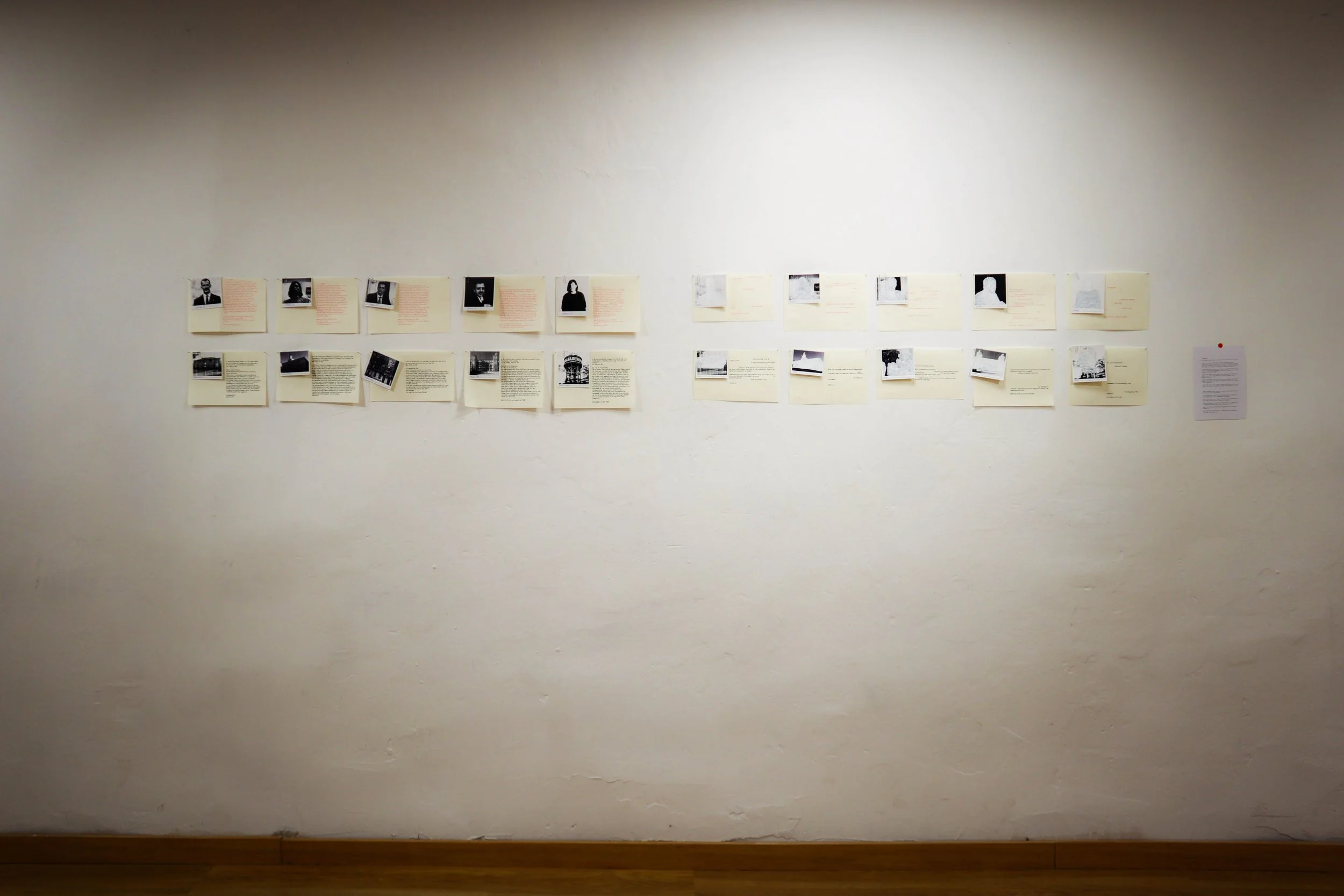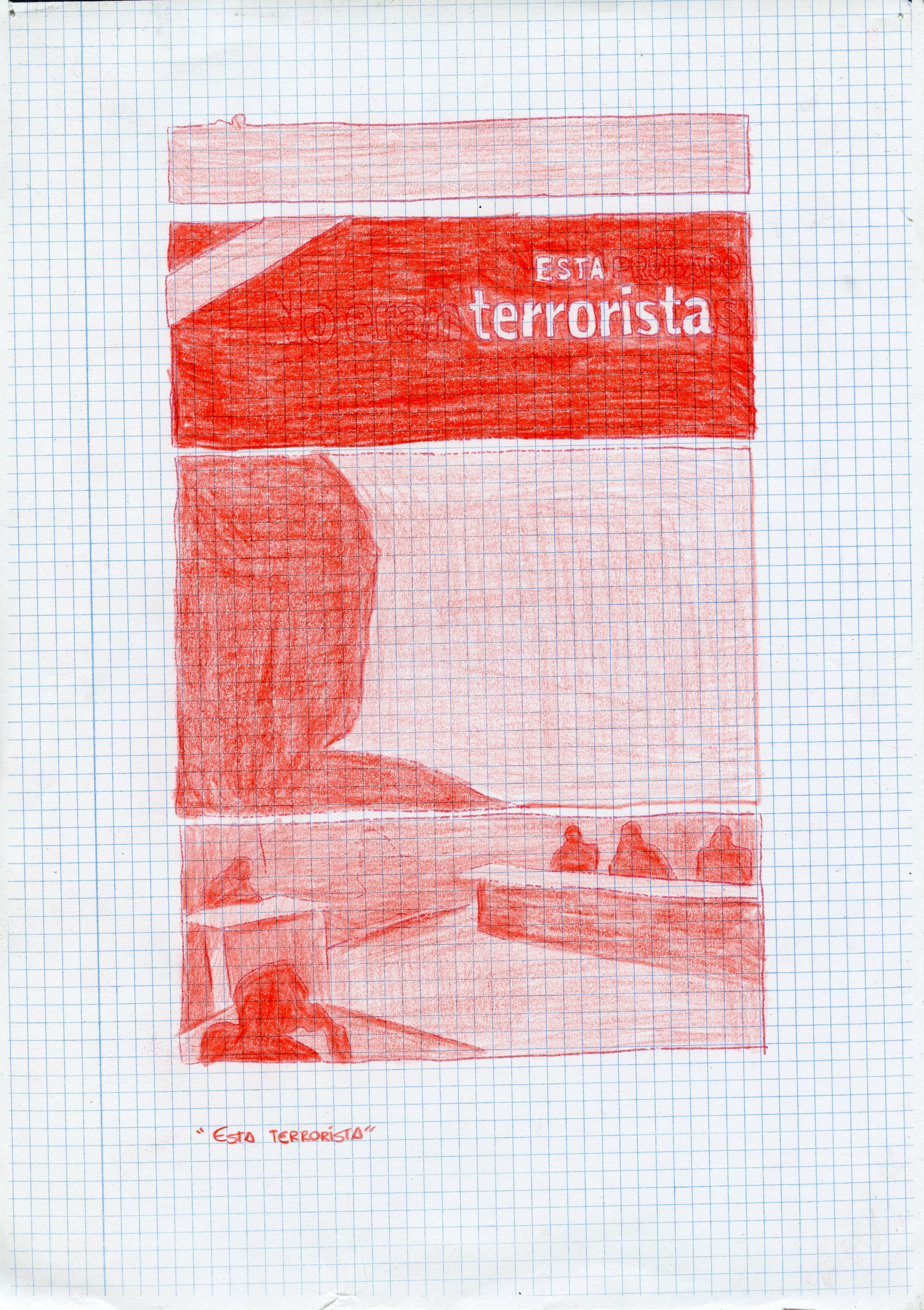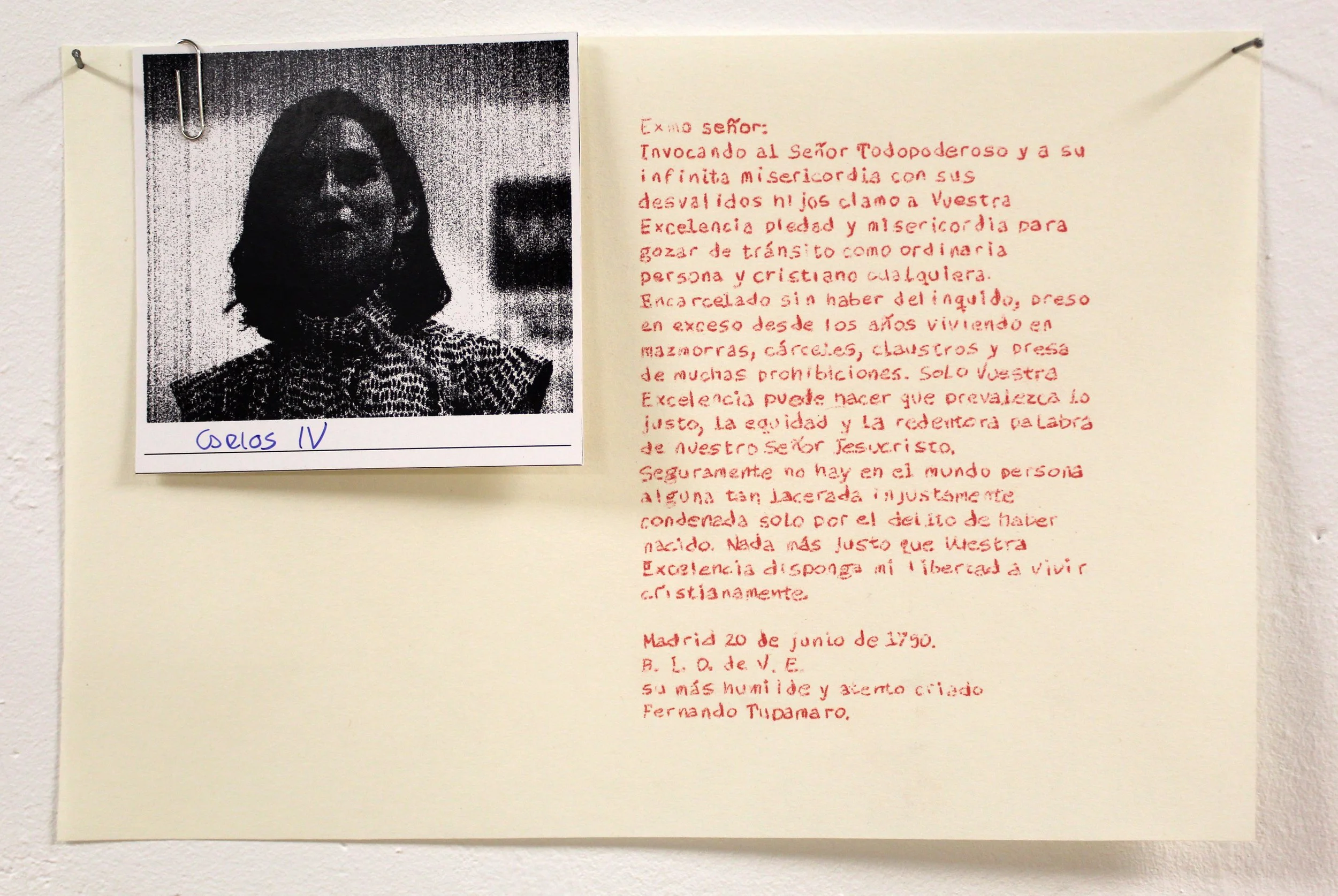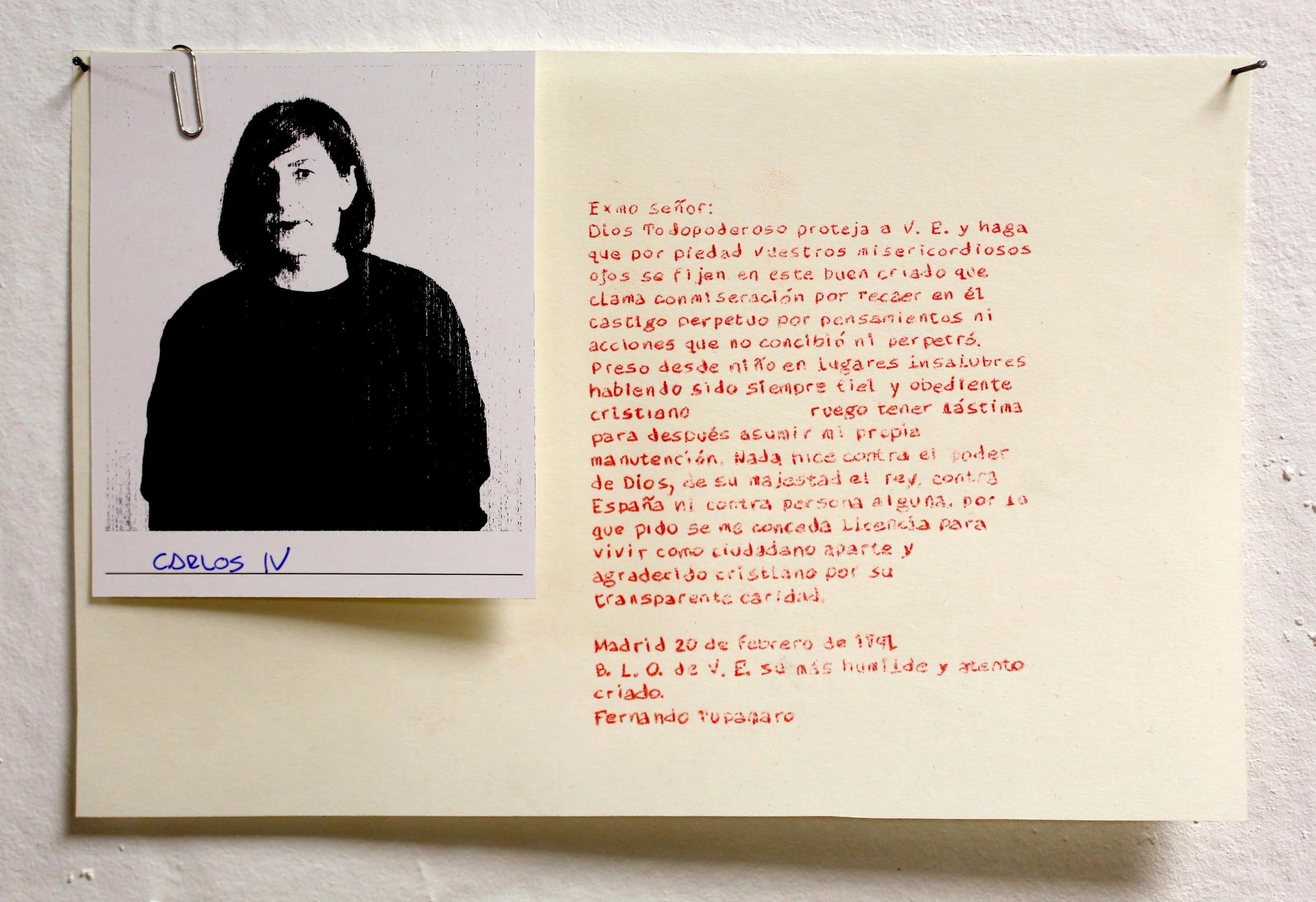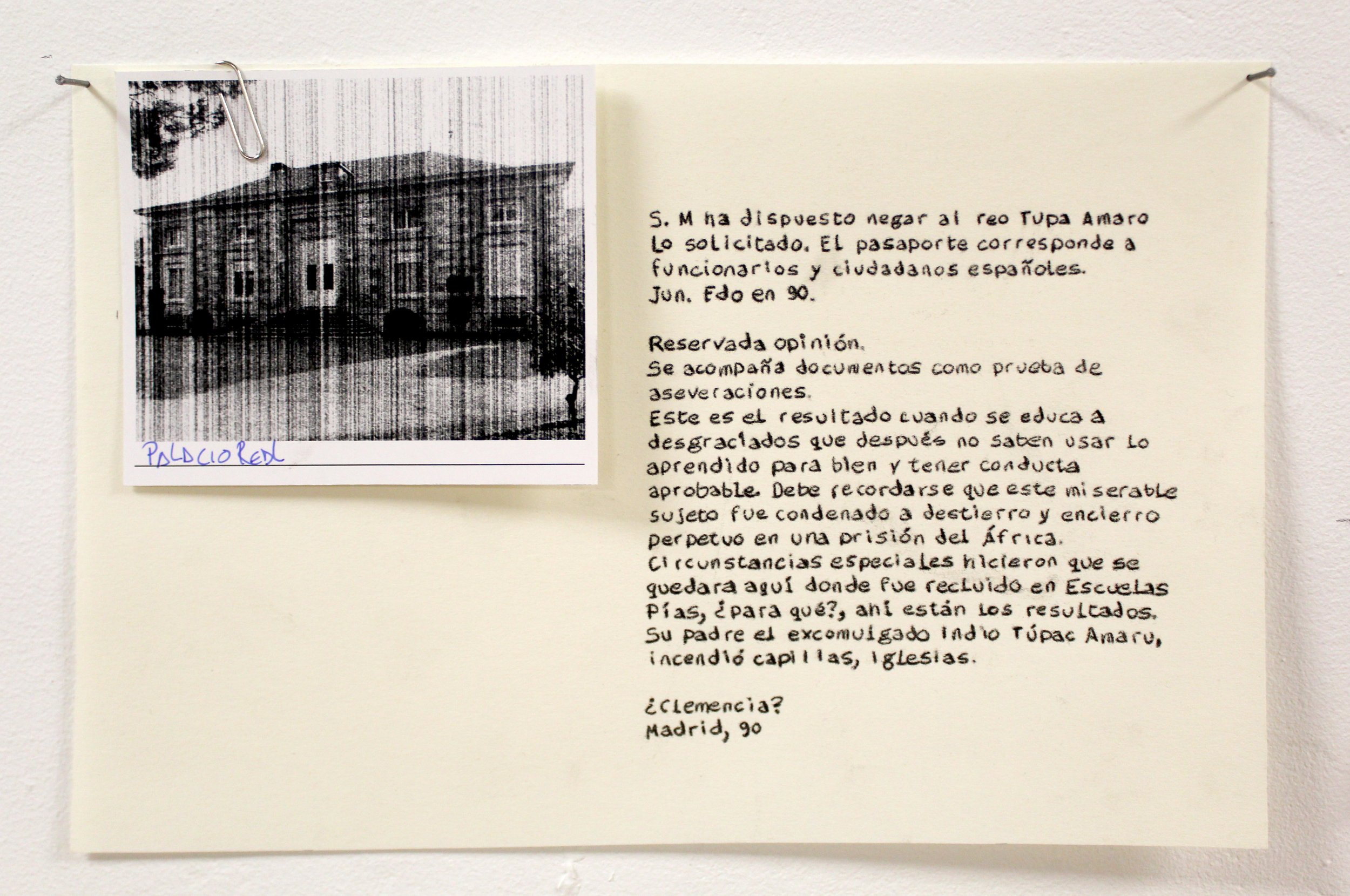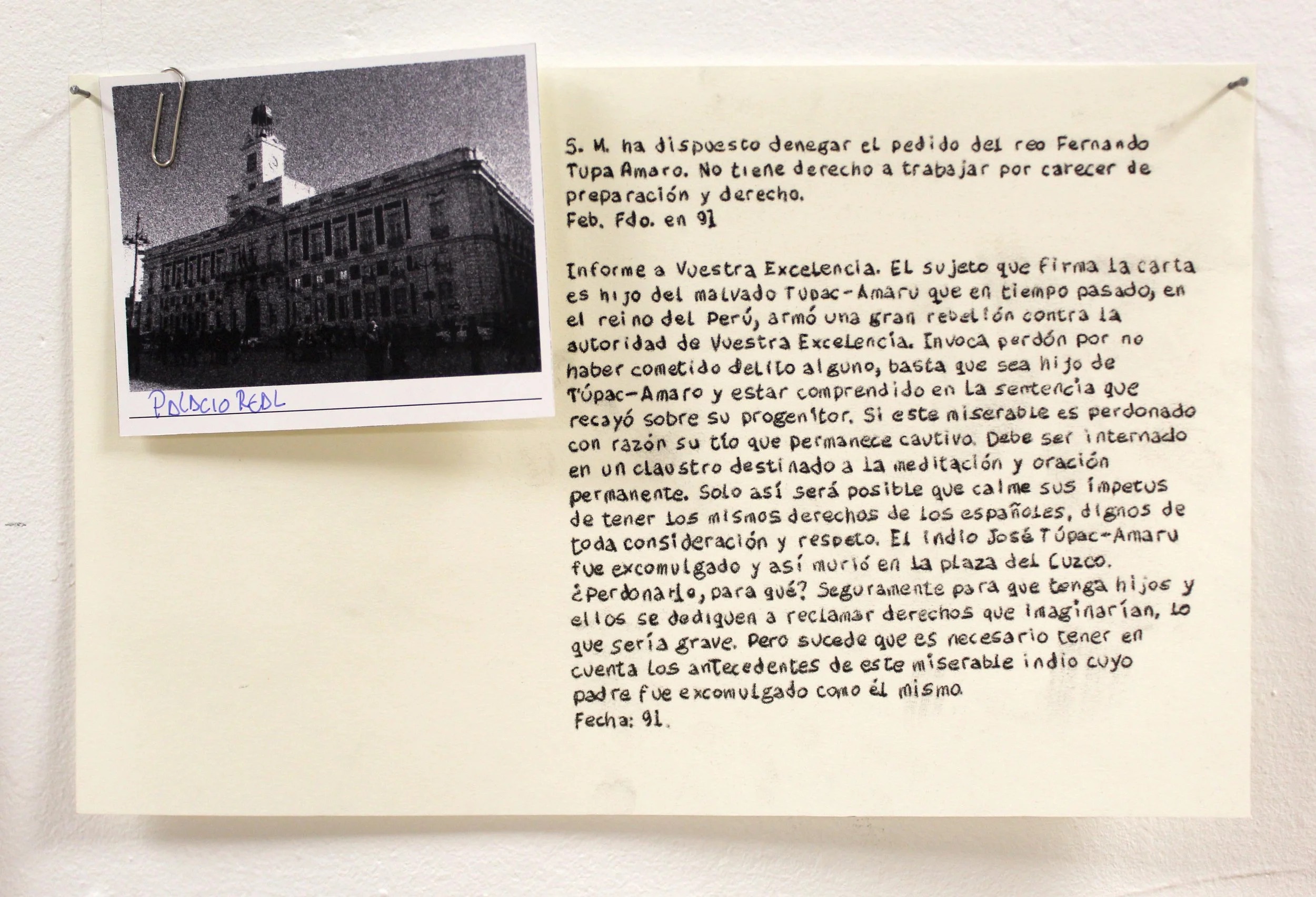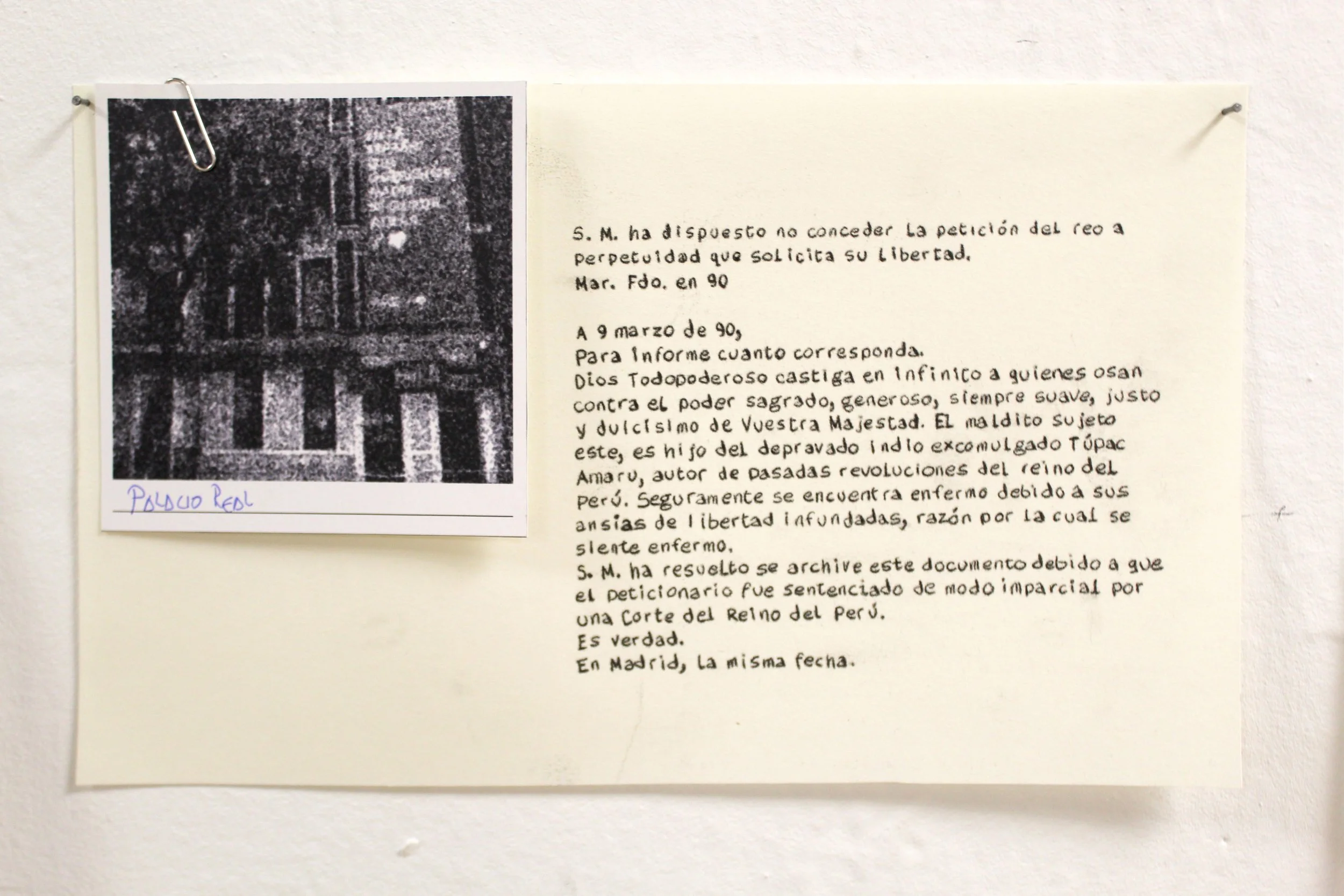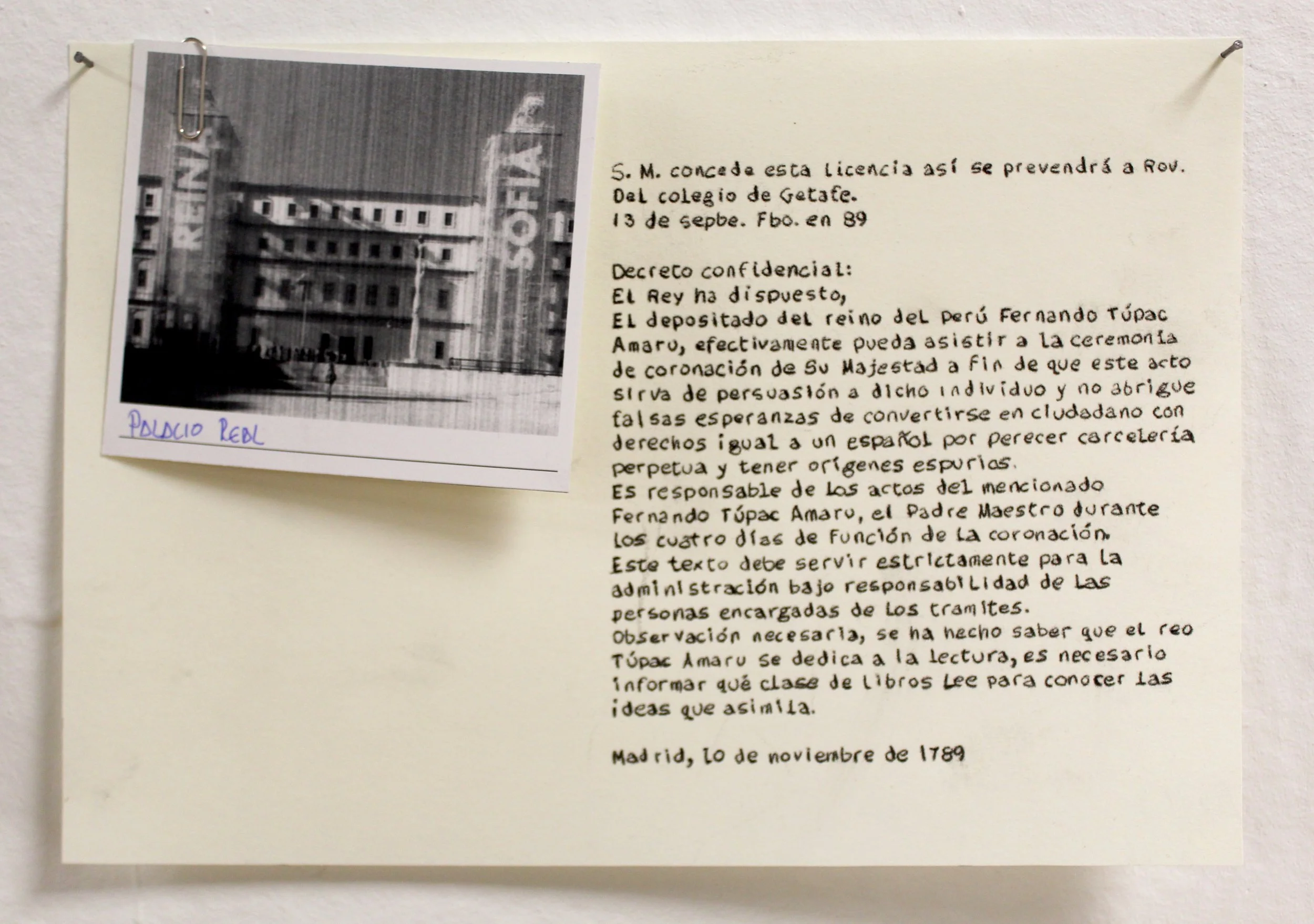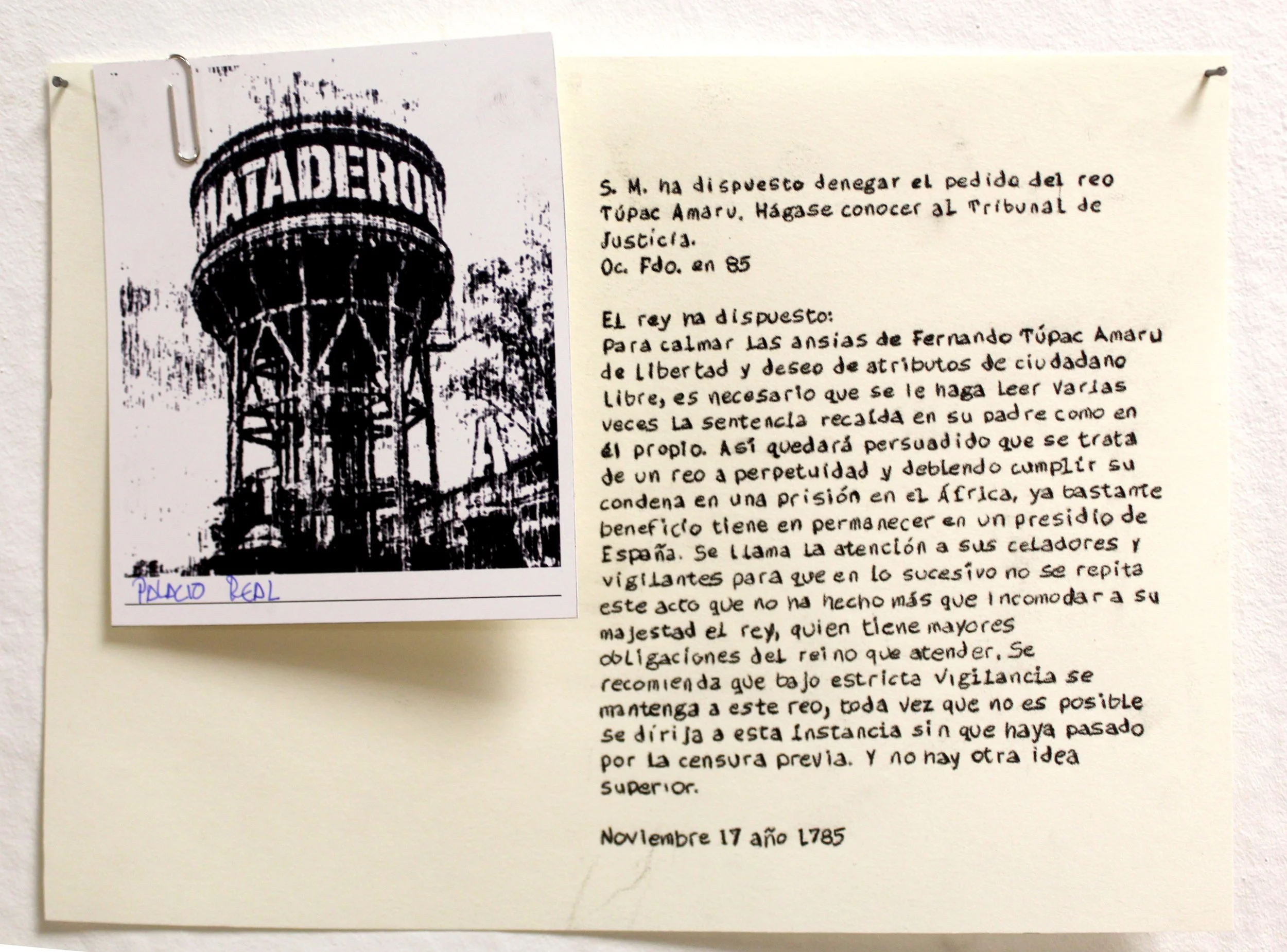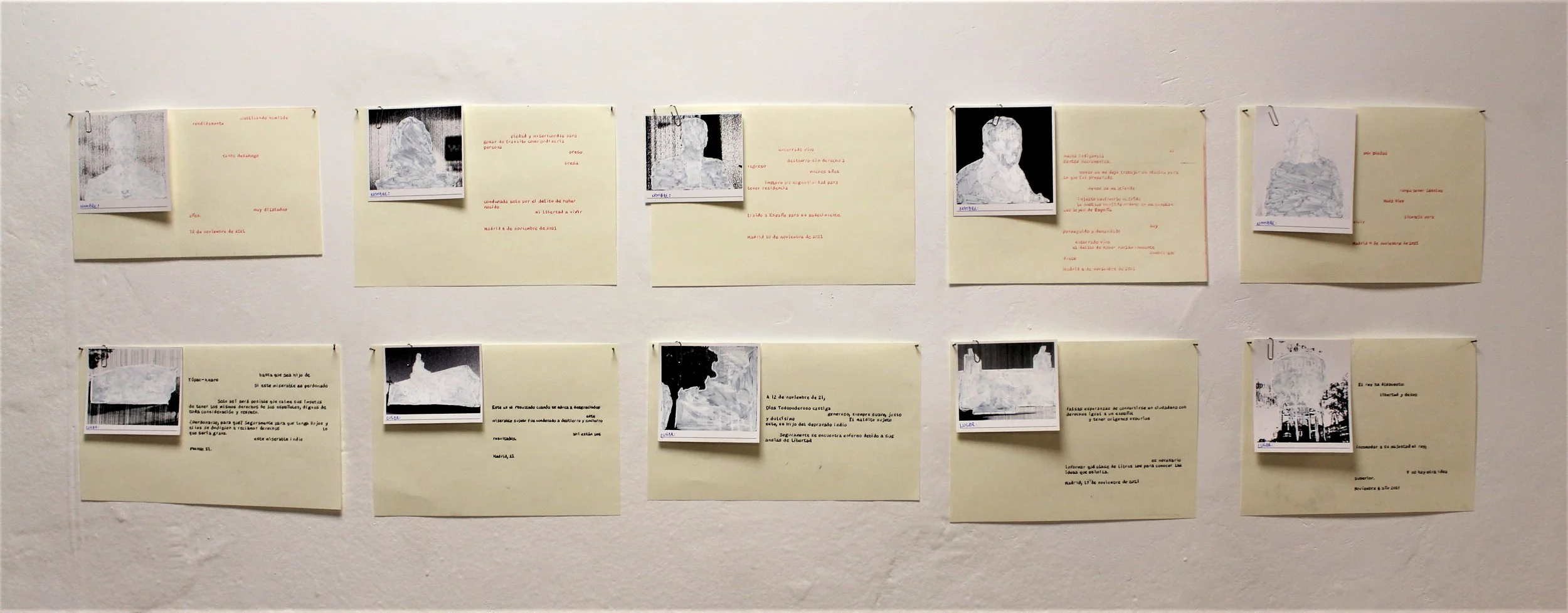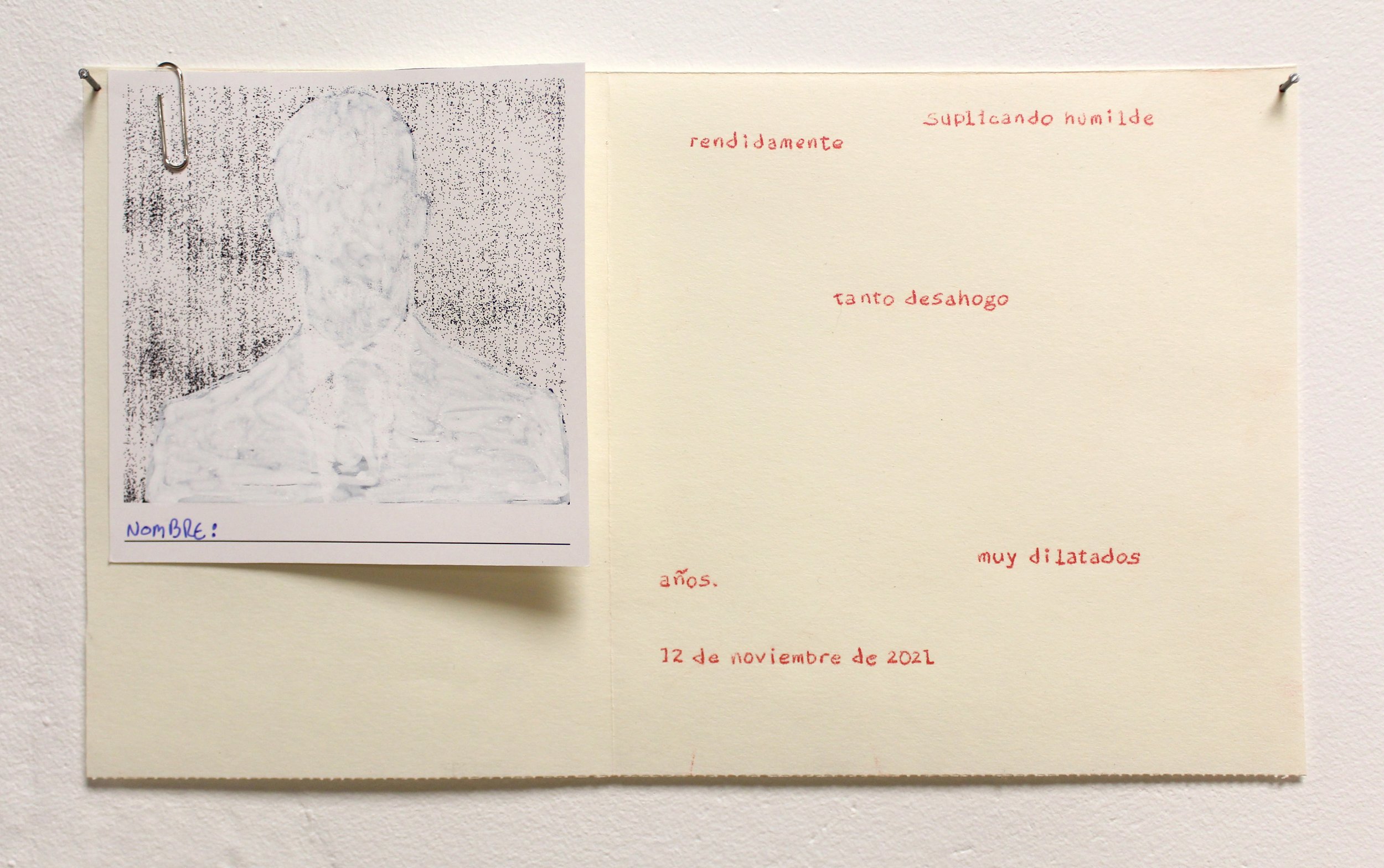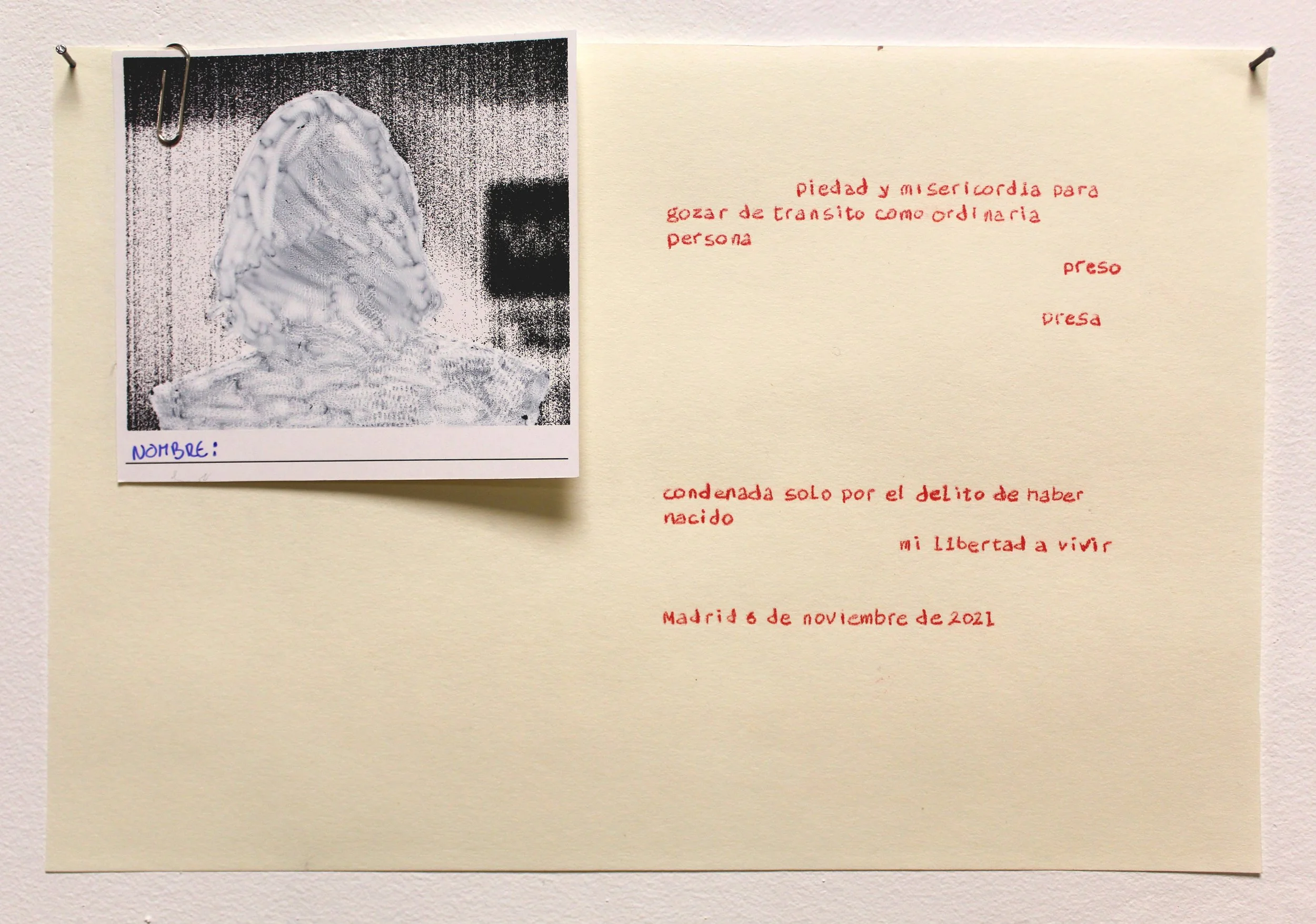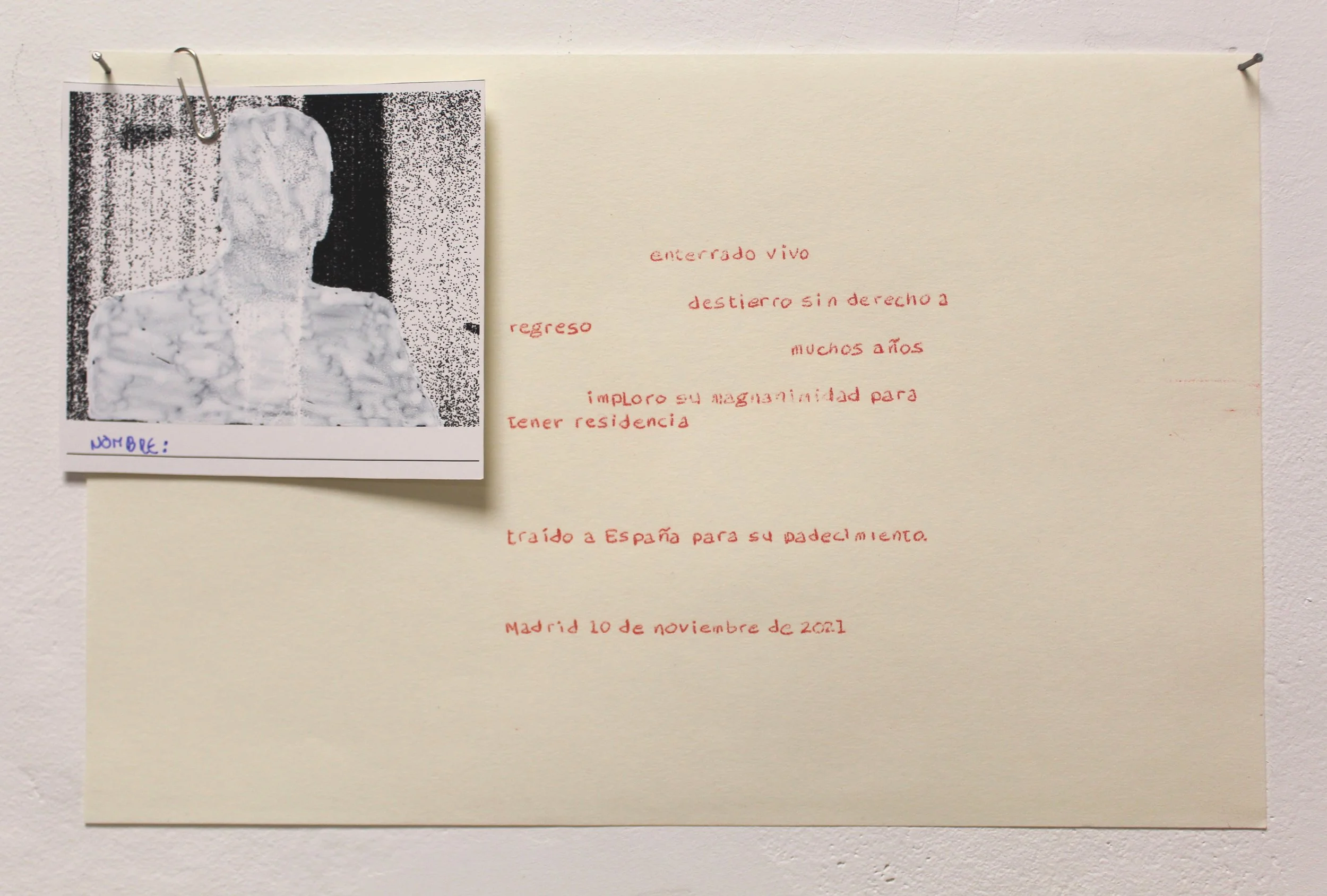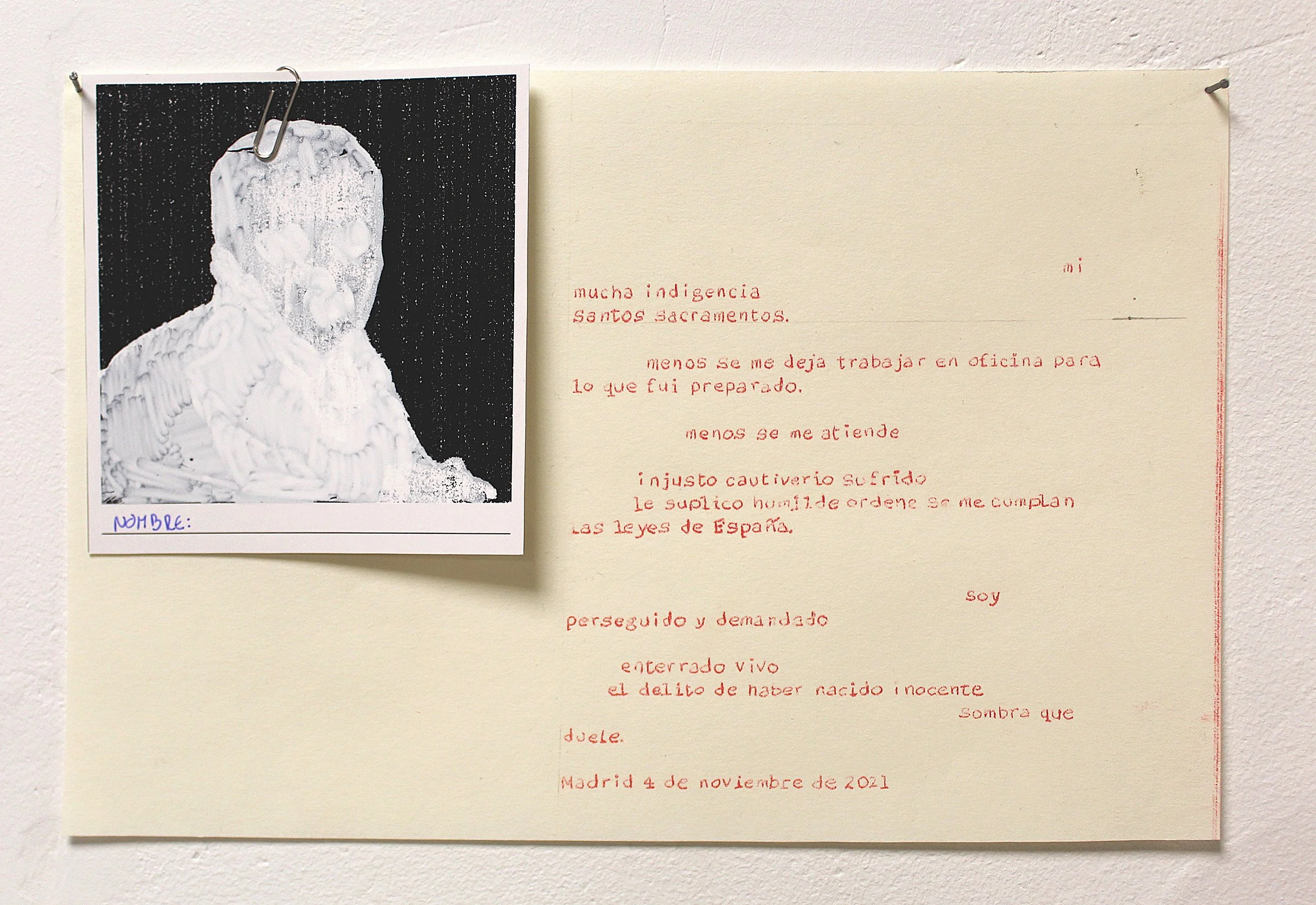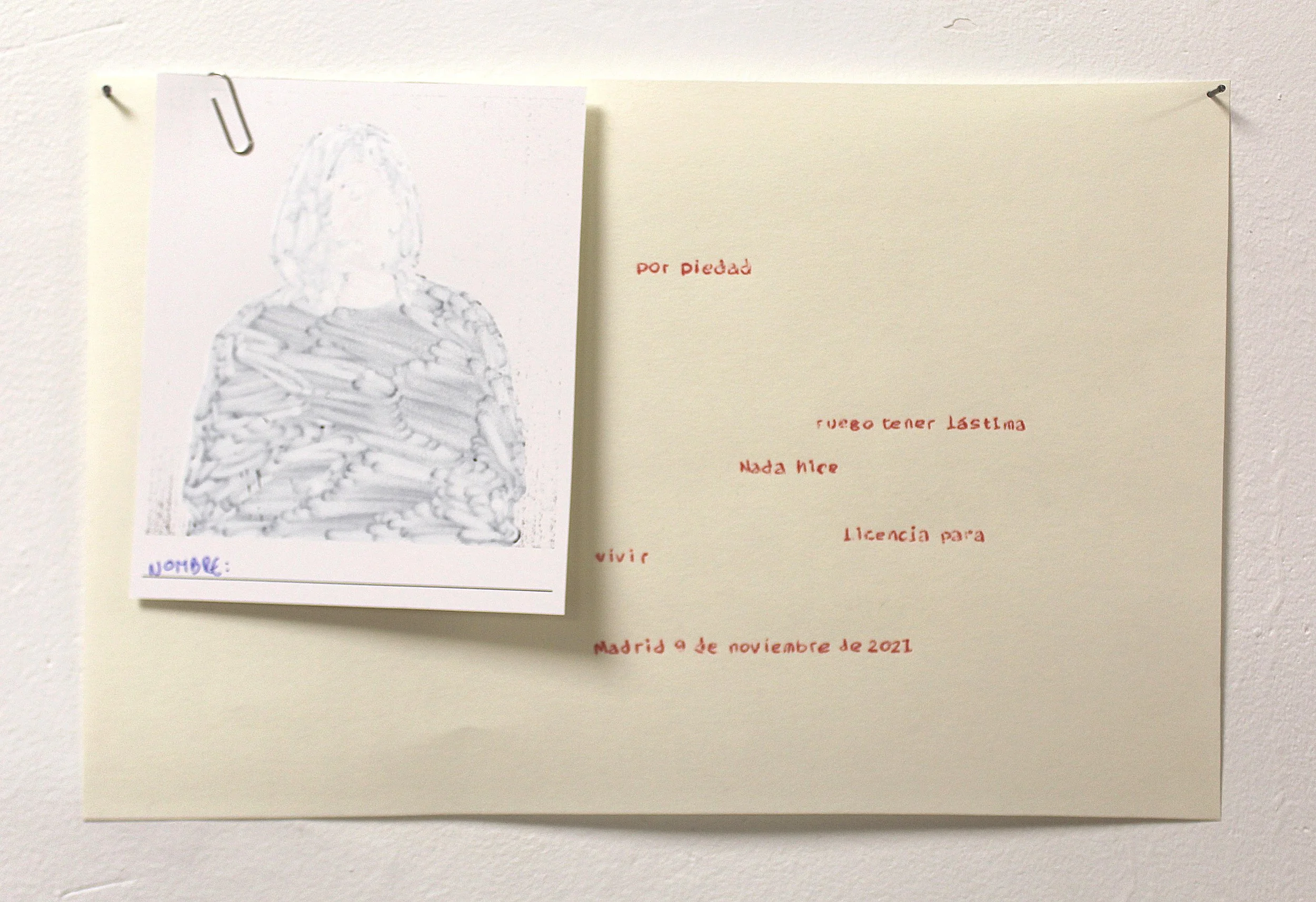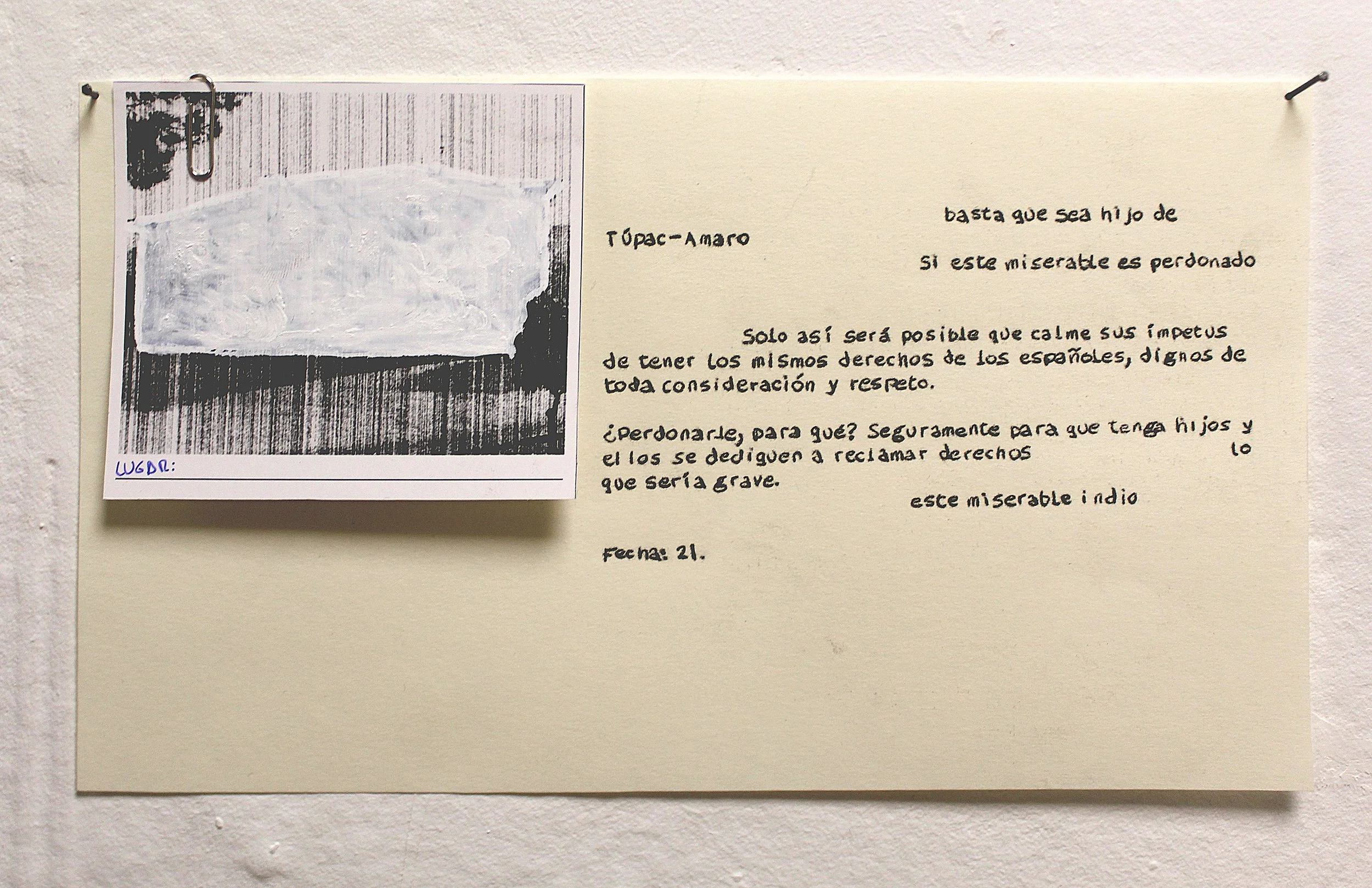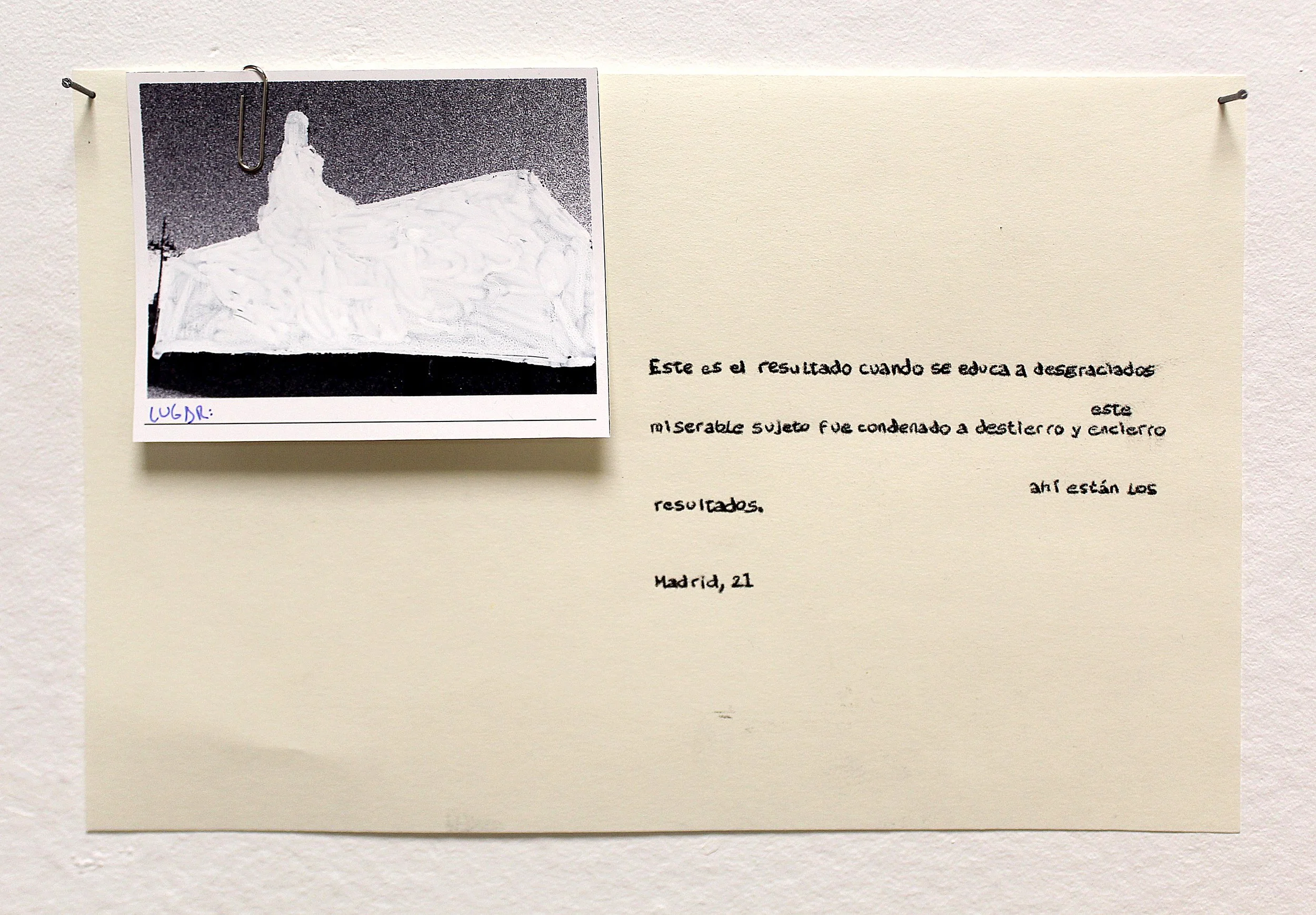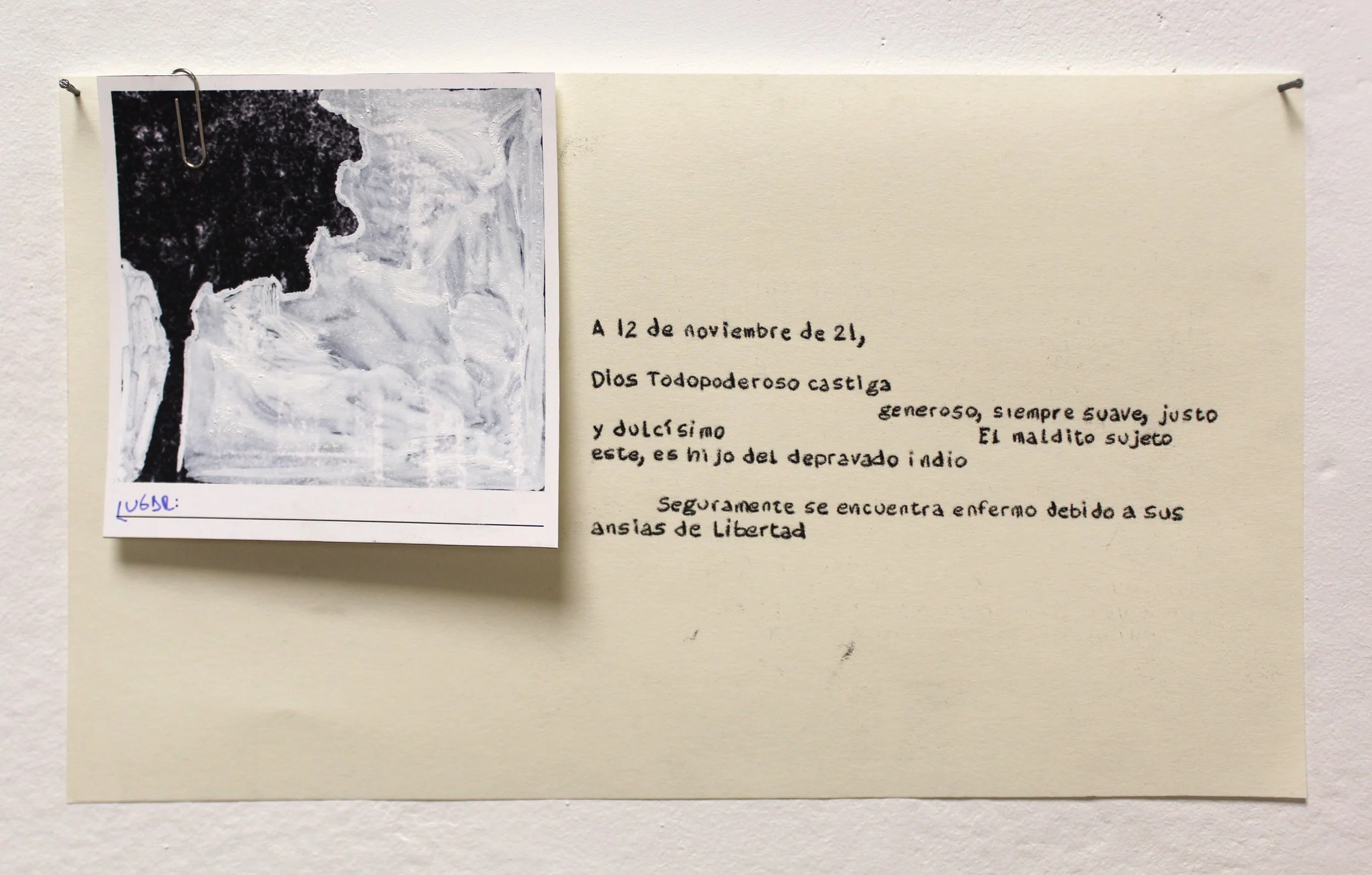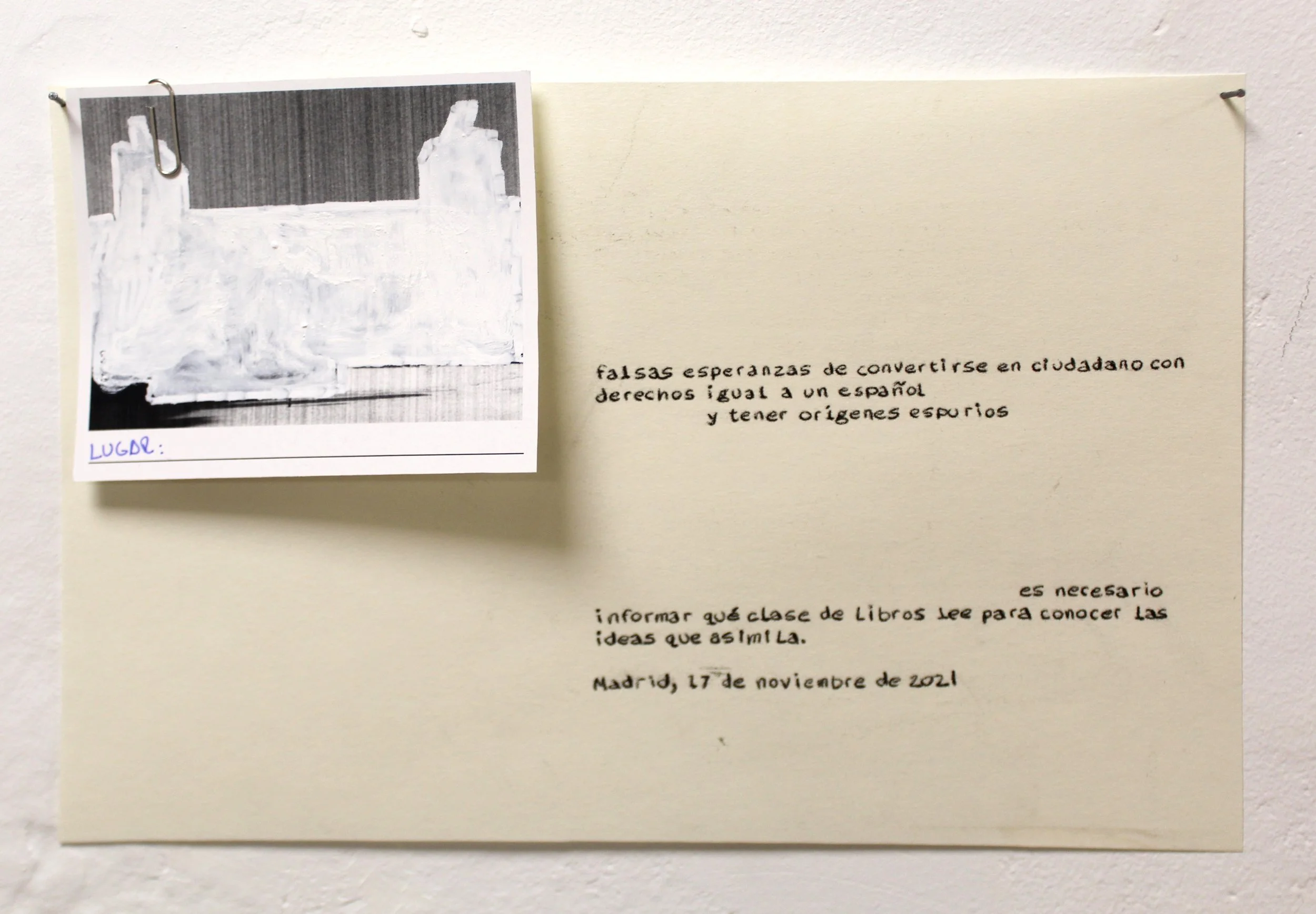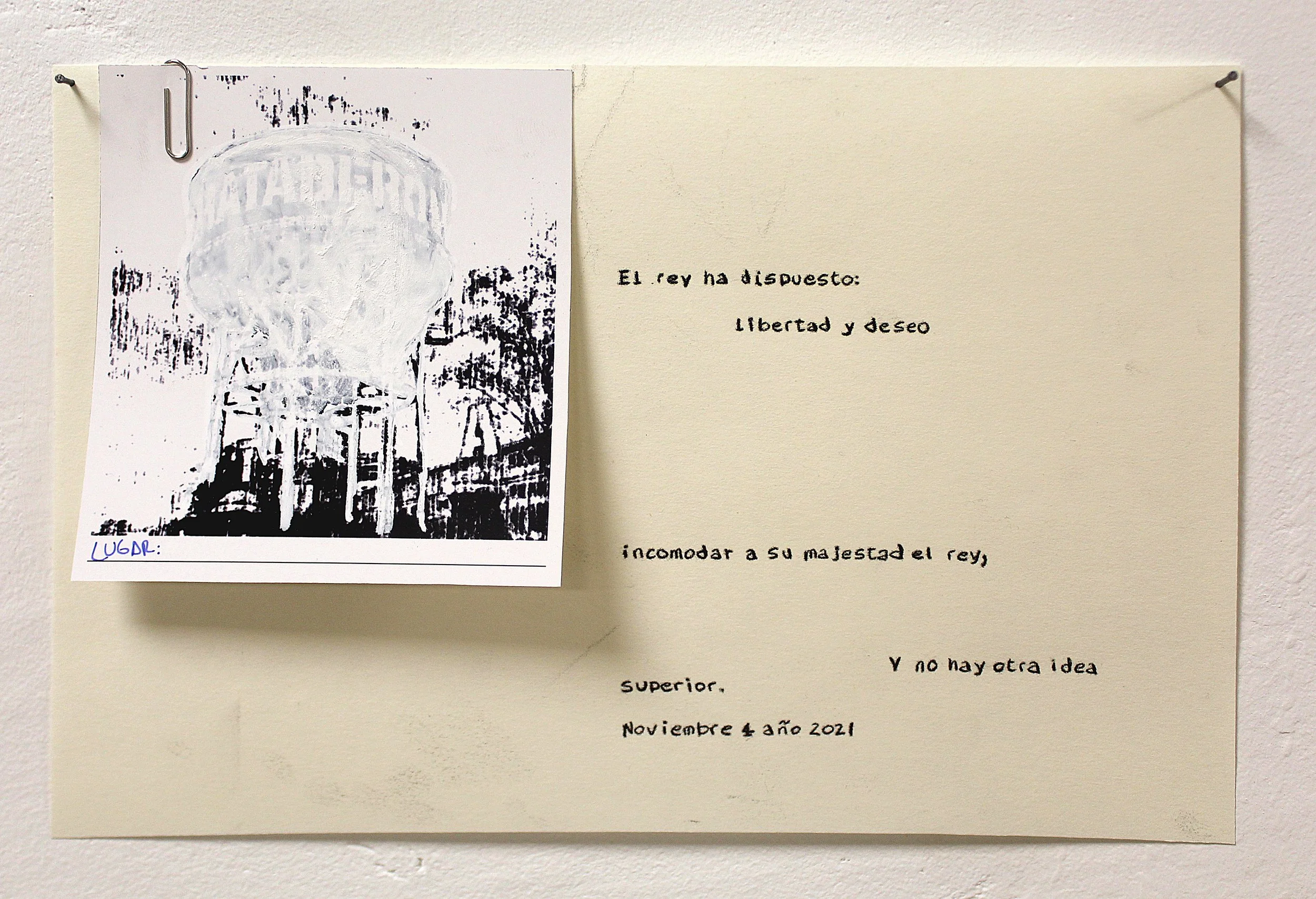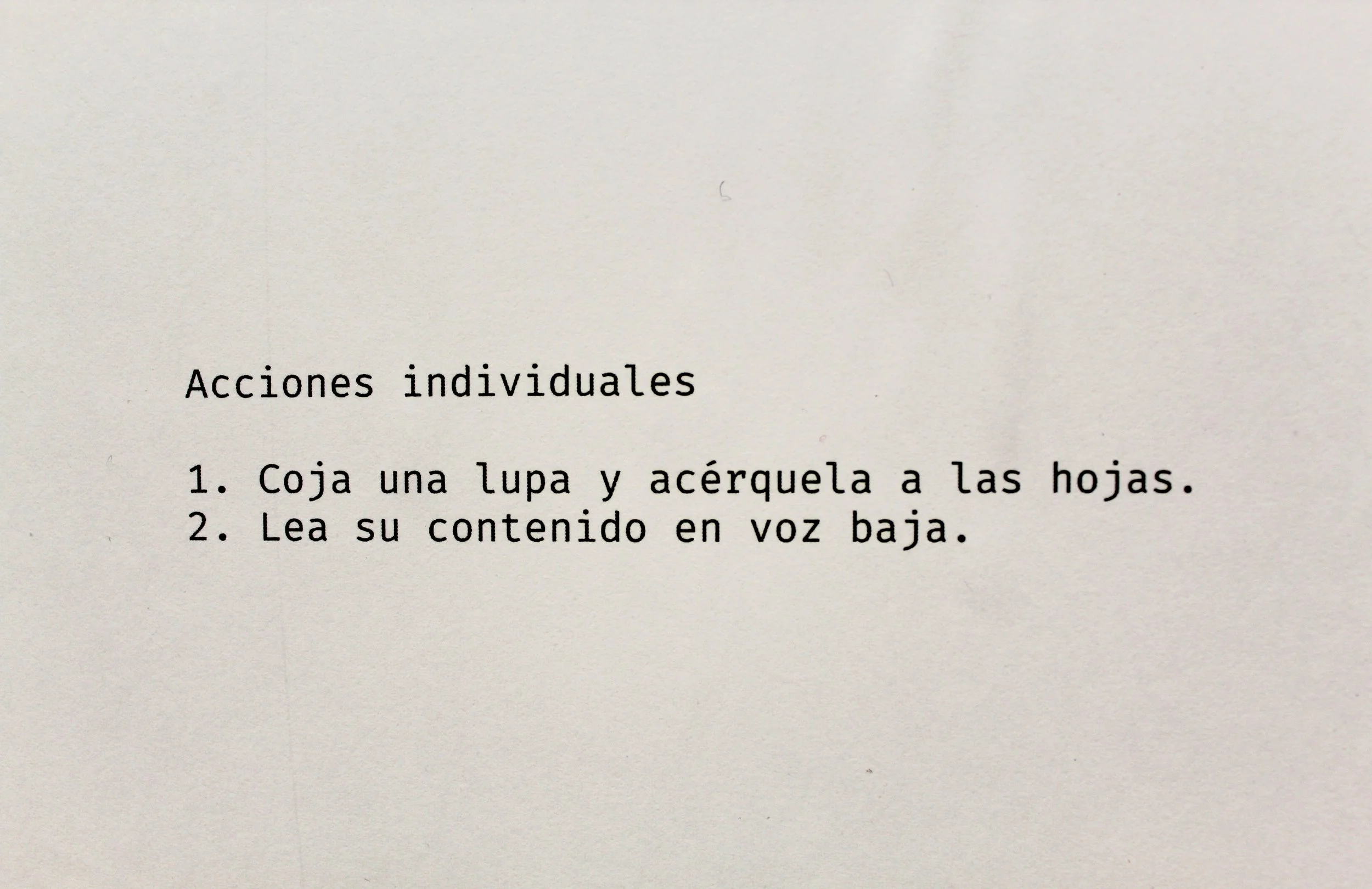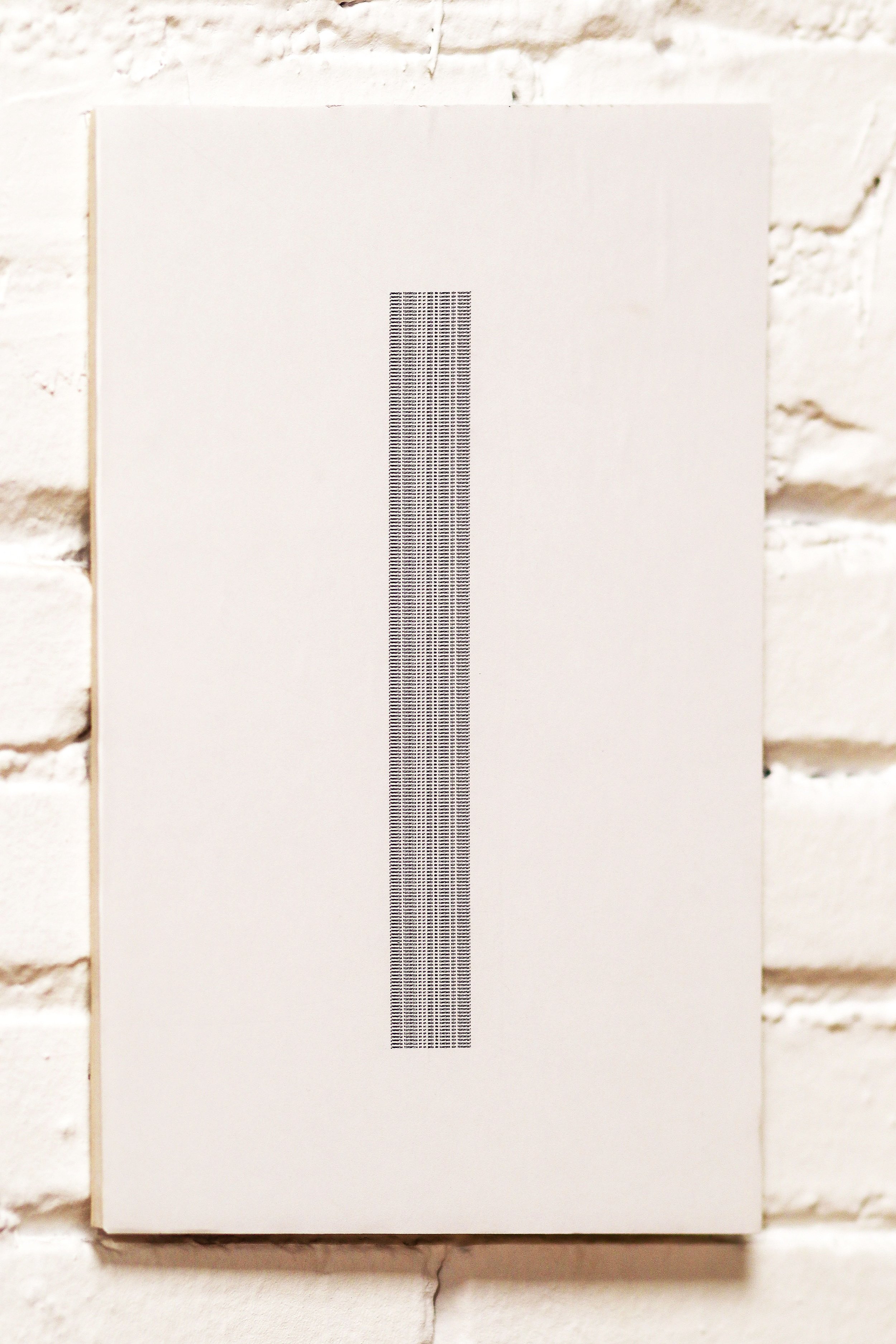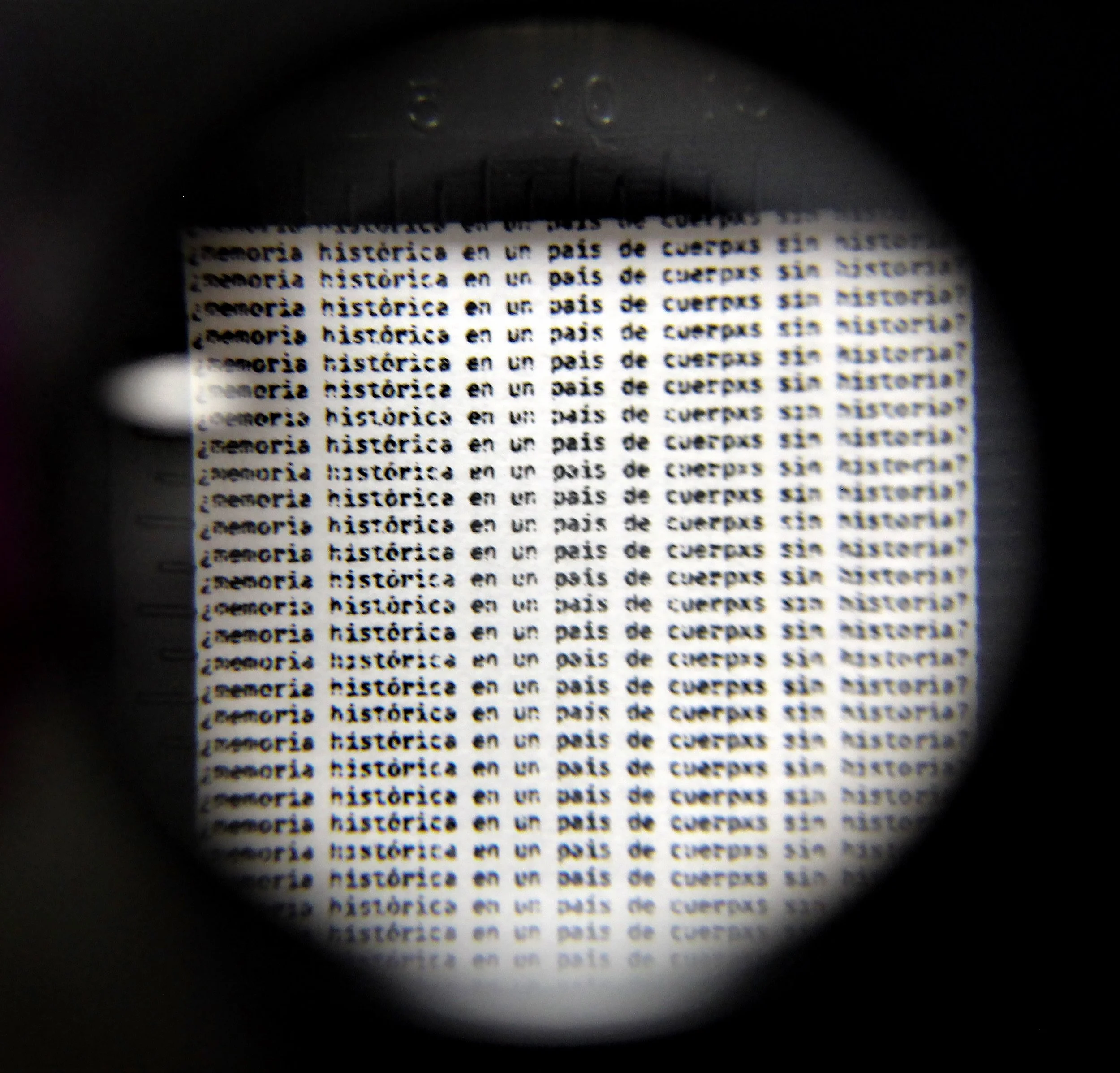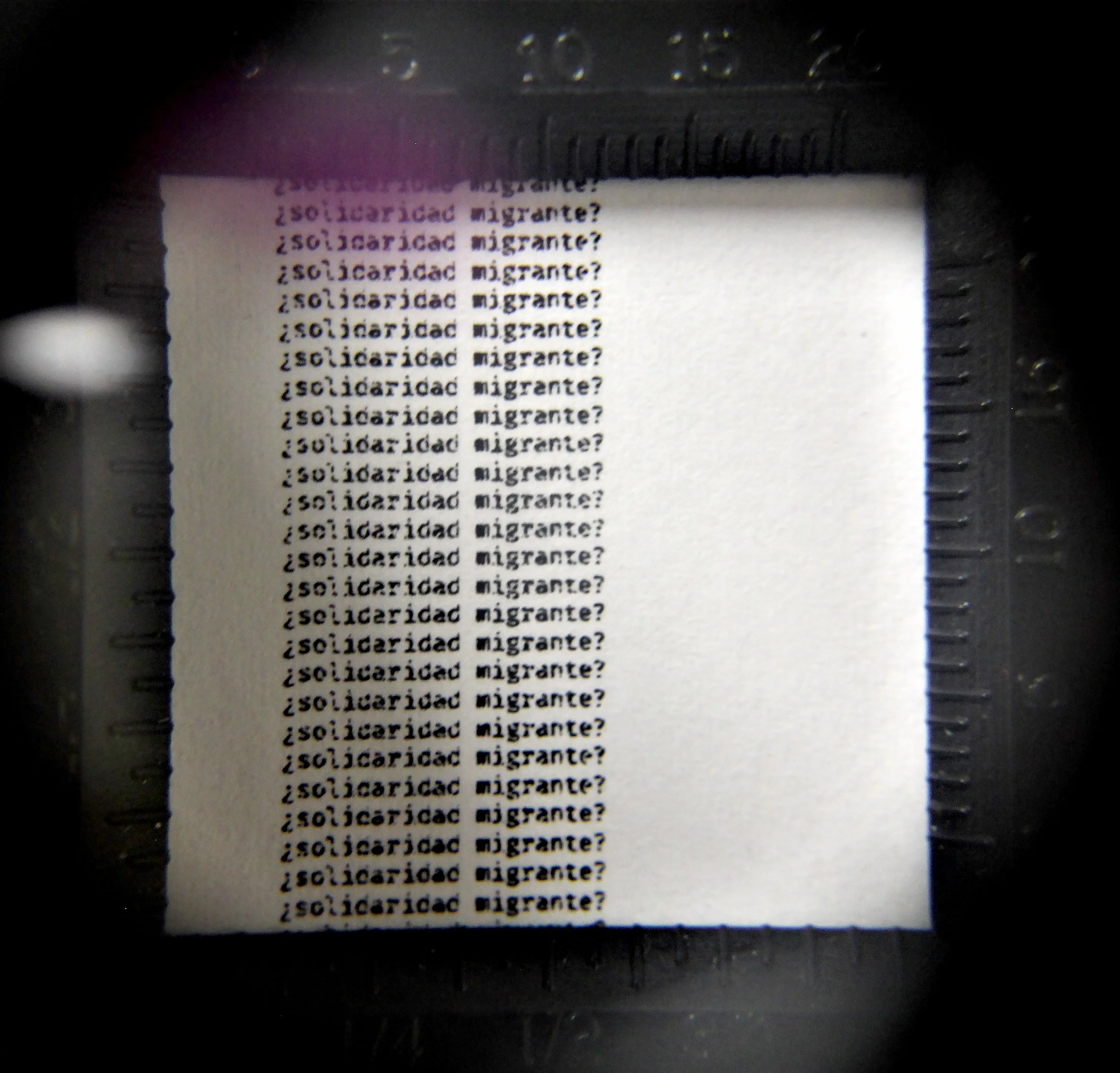¿Qué haces tú en mi país?
Texto por: Francisco Godoy Vega
Nada más llegar a Madrid, el artista peruano Isaac Ernesto fue increpado por un hombre blanco español con la pregunta que da título a esta exposición, marcando los límites raciales de la no pertenencia a España, un territorio originario y reproductor de la supremacía blanca moderno-colonial. Isaac no es la primera ni la última persona racializada que se ha visto confrontada a este tipo de preguntas o afirmaciones de violencia racista: llevamos cinco siglos siendo inferiorizades por el reino de España y los españoles blancos tanto en la metrópolis como en las colonias.
La interpelación extranjerizante del blanco va a señalar a los cuerpos cholos, negros, indígenas o asiáticos como aquellos que nunca perteneceremos a este territorio más que como sus criados siempre foráneos. Considerando esta pregunta racista y la larga historia de la división racial del mundo, es que Isaac Ernesto propone con esta exposición un análisis histórico e intersubjetivo a partir de la figura de Fernando Túpac Amaru Bastidas, uno de los hijos de Túpac Amaru II y Micaela Bastidas, quien -tras la revolución fallida promovida por sus padres y su ajusticiamiento en el Cusco-, fue desterrado siendo un niño y encarcelado en Madrid, muriendo en 1799 en el barrio de Lavapiés.
A partir de las cartas escritas desde la cárcel por Fernando al rey Carlos IV, el artista establece un cruce afectivo entre esa memoria y su propia vida como hijo de militantes del Movimiento Revolucionario Túpac Amaru (MRTA), una organización armada del Perú de los 1980s y 1990s que, en la senda de múltiples procesos revolucionarios en América Latina y el Caribe, propuso la toma de las armas como única salida posible a la represión de un sistema de gobierno del cual no se podía escapar a través de la llamada vía democrática, tal como en el siglo XVIII lo hicieran Bastidas y Túpac Amaru II.
El señalamiento fragmentario de estos dos momentos históricos nos invita a abrir las heridas de la perpetuación de un modelo de racismo colonial vivo en las calles e instituciones españolas, y hacernos preguntas capitales en relación a la resistencia y la violencia, la rebelión y la democracia, la migración y el destierro, el crimen y el castigo, la víctima y el victimario; heridas y preguntas afectadas tanto por la dimensión pública de los procesos de justicia como sus repercusiones personales y familiares: “condenado solo por el delito de haber nacido”, clamando, como lo hiciera Fernandito, “piedad y misericordia para gozar de tránsito como ordinaria persona”.
Ficha
Dibujos, textos manuscritos, instrucciones, piezas participativas
Registro fotográfico: Abdiel Segarra
2021
Exposiciones
La Parcería
(Programa de residencias artísticas Desplazamientos 2021)
Madrid, 2021
What Are You Doing in My Country?
Text by: Francisco Godoy Vega
Upon arriving in Madrid, Peruvian artist Isaac Ernesto was confronted by a white Spanish man with the question that gives this exhibition its title—marking the racial boundaries of non-belonging in Spain, a territory that is both the origin and reproducer of modern-colonial white supremacy. Isaac is neither the first nor the last racialised person to face such questions or expressions of racist violence: for five centuries we have been subjected to inferiority by the Spanish crown and white Spaniards, both in the metropolis and the colonies.
The white person’s foreignising gaze targets cholo, Black, Indigenous, or Asian bodies, positioning them as outsiders who will never truly belong to this territory—except as ever-foreign servants. In response to this racist question and the long history of the world’s racial division, Isaac Ernesto proposes in this exhibition a historical and intersubjective inquiry through the figure of Fernando Túpac Amaru Bastidas, one of the sons of Túpac Amaru II and Micaela Bastidas. After the failed revolution led by his parents and their execution in Cusco, Fernando was exiled as a child and imprisoned in Madrid, where he died in 1799 in the Lavapiés neighborhood.
Drawing on the letters Fernando wrote from prison to King Charles IV, the artist weaves an affective connection between that memory and his own life as the son of militants from the Túpac Amaru Revolutionary Movement (MRTA), an armed organisation active in Peru during the 1980s and 1990s. Following the path of many revolutionary movements in Latin America and the Caribbean, the MRTA proposed armed struggle as the only viable response to a system of government from which escape through so-called democratic means was impossible—just as Bastidas and Túpac Amaru II had concluded in the 18th century.
By fragmentarily pointing to these two historical moments, the work opens the wounds of a colonial model of racism still very much alive in the streets and institutions of Spain, and invites us to ask fundamental questions about resistance and violence, rebellion and democracy, migration and exile, crime and punishment, victim and perpetrator. These are wounds and questions shaped by both the public dimension of justice processes and their personal and familial repercussions: “condemned solely for the crime of being born,” pleading, as little Fernandito once did, “for mercy and compassion to be allowed to live as an ordinary person.”
Specifications
Drawings, handwritten texts, instructions, participatory pieces
Photographic documentation: Abdiel Segarra
2021
Exhibitions
La Parcería
(Desplazamientos 2021 Artist Residency Program)
Madrid, 2021



